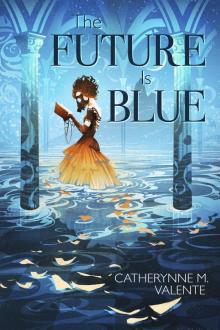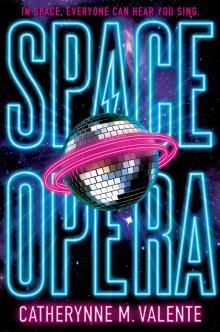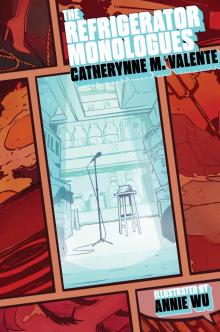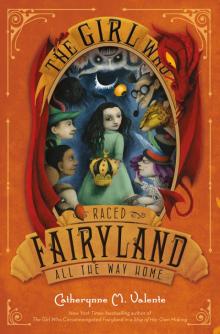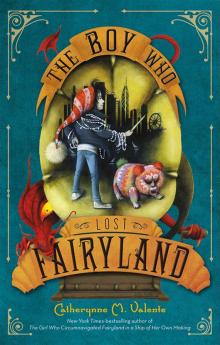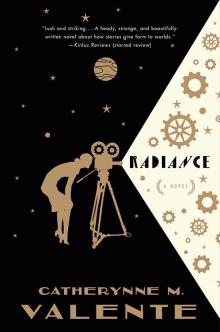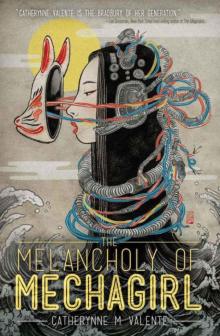


The Chemistry of Alchemy, Page 1
Cathy Cobb
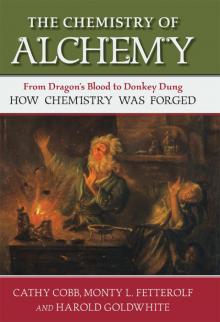
ALSO AVAILABLE:
The Joy of Chemistry
Crime Scene Chemistry for the Armchair Sleuth
Magick, Mayhem, and Mavericks:
The Spirited History of Physical Chemistry
Published 2014 by Prometheus Books
The Chemistry of Alchemy: From Dragon's Blood to Donkey Dung, How Chemistry Was Forged. Copyright © 2014 by Cathy Cobb, Monty L. Fetterolf, and Harold Goldwhite. All rights reserved. No part of this publication may be reproduced, stored in a retrieval system, or transmitted in any form or by any means, digital, electronic, mechanical, photocopying, recording, or otherwise, or conveyed via the Internet or a website without prior written permission of the publisher, except in the case of brief quotations embodied in critical articles and reviews.
Prometheus Books recognizes the following registered trademarks and trademarks mentioned within the text: Band-Aid®; pH Down®; Pyrex®; Rorschach™; Sterno®; Styrofoam™; Teflon®.
The Internet addresses listed in the text were accurate at the time of publication. The inclusion of a website does not indicate an endorsement by the author(s) or by Prometheus Books, and Prometheus Books does not guarantee the accuracy of the information presented at these sites.
Cover image courtesy of the Chemical Heritage Foundation Collection
Jacket design by Grace M. Conti-Zilsberger
All images in the photo insert are by Scott Webster of WebsterPhotography,
www.websphoto.com
Unless otherwise specified, images within the text are by Linda Muse.
Inquiries should be addressed to
Prometheus Books
59 John Glenn Drive
Amherst, New York 14228
VOICE: 716–691–0133
FAX: 716–691–0137
WWW.PROMETHEUSBOOKS.COM
18 17 16 15 14 5 4 3 2 1
The Library of Congress has cataloged the printed edition as follows:
Cobb, Cathy.
The chemistry of alchemy : from dragon's blood to donkey dung, how chemistry was forged / by Cathy Cobb, Monty Fetterolf, and Harold Goldwhite.
pages cm
Includes bibliographical references and index.
ISBN 978-1-61614-915-4 (hardback) • ISBN 978-1-61614-916-1 (ebook)
1. Chemistry—History—16th century. 2. Chemistry—History—17th century. 3. Alchemy—History—16th century. 4. Alchemy—History—17th century. I. Fetterolf, Monty L. II. Goldwhite, Harold. III. Title.
QD13.C63 2014
540.1'12—dc23
2014003742
Printed in the United States of America
Acknowledgments
Preface
Apologia
X-Rated Alchemy
PART 1. SETTING THE SCENE
Introduction to Part 1: Stirring the Fires
Chapter 1. The Zosimos Effect
Demonstration 1. Calcination, Distillation, Transmutation!
Chapter 2. Islamic Authors—Romancing the Stone
Demonstration 2. The Mercury/Sulfur Makeup of Metals
PART 2. ALCHEMY IN THE MIDDLE
Introduction to Part 2: Middle-Aged Alchemy
Chapter 3. Auld Michael and the Fractious Friars
Demonstration 3. The Firing and Falsifying of Gold
Chapter 4. Geber and the Sum of Perfection
Demonstration 4. Divine Waters
Chapter 5. Aqua Vitae!
Demonstration 5. Burning Waters
Chapter 6. Philosophers’ Stone
Demonstration 6. Erina's Fabulous Philosophers’ Stone
Chapter 7. Rocky Romance: Miners and Magick in the Renaissance
Demonstration 7. The Parting of Gold
Chapter 8. Paradigm, Paradox: Paracelsus
Demonstration 8. Diana and the Homunculus
PART 3. ALCHEMICAL RENAISSANCE
Introduction to Part 3: Paracelsus Is Dead; Long Live Paracelsus
Chapter 9. Paracelsian Women
Demonstration 9. Book of Secrets
Chapter 10. Paracelsian Men
Demonstration 10. Transmutation Revisited
Chapter 11. Charlatans and Chicanery
Demonstration 11. Tricks of the Trade
Chapter 12. What Can You Do with a Degree in Alchemy?
Demonstration 12. Practical Alchemy
Chapter 13. Renaissance Alchemical Authors
Demonstration 13. Lifting the Mystical Fog
Chapter 14. Sendivogius and Rudolf—Fire and Salt
Demonstration 14. The Poo Plan
Chapter 15. Johannes van Helmont—The Art of Fire
Demonstration 15. The Gas That Got Away
PART 4. THOROUGHLY MODERN ALCHEMY
Introduction to Part 4: Full-Blown Alchemy
Chapter 16. Digby and Drebble—Something in the Air
Demonstration 16. Up in the Air
Chapter 17. The Society of Jesus and the Fraternity of the Rosy Cross
Demonstration 17. The Jesuit Workroom
Chapter 18. Glauber's Salt and Glauber's Gold
Demonstration 18. Glauber's Ghostly Golden Garden
Chapter 19. The Harvard Alchemists—and the Honorable Robert Boyle Begins
Demonstration 19. Reduction to the Pristine State
Chapter 20. Robert Boyle Ends—and So Do We
Demonstration 20. The Color of Alchemy
Conclusion: Alabaster and Clay
Stores and Ores
Notes
Bibliography: The Antiquarians
Index
James Bohning and Marjorie Gapp, of the Chemical Heritage Foundation; the staff of the John F. Kennedy Library, California State University, Los Angeles; and Elton-John Torres of the Rare Book and Manuscript Library, University of Pennsylvania, for assistance with illustrations.
H. G.
Thanks: To Erina Hoshi, the student who taught us so much. Without your inspiration, instinct, patience, and persistence, we would still be working on demos in the lab. You are a wonderful chemist and friend. Thank you.
Acknowledgments: Brigitte Smith and the library staff at the University of South Carolina at Aiken for helping us locate the dusty old alchemical books we needed; the Department of Chemistry and Physics at the University of South Carolina at Aiken for their support and the use of laboratory facilities; Kathleen McCallister of Columbia Rare Books and Special Collections of the University of South Carolina for locating critical materials; and Mead Hall Episcopal School of Aiken South Carolina for encouragement, office space, and an excellent daily salad bar for lunch.
C. C. and M. L. F.
Thanks to Dr. and Mrs. Clarence Cobb for (once again!) reading every word of a tedious first draft, and to Judy Dailey, the most supportive sister in the world, for advice and guidance, past, present, and future.
Thanks to the people who have chosen to befriend me, though I don't know why: Daphne Harris (friend and sister), Joanne Morton, Linda Muse, Susan Varallo, and Francesca Pataro (who has walked with me many, many miles). Many thanks to Linda Muse, friend and creator of the wonderful illustrations that grace these pages, and thanks to Dr. Gary Patterson for his interest in characters in chemistry, including me.
Special thanks also to Tara Bostwick of Aiken Educational Services for generous access to stables and manure piles, to Porky Bradberry of Porky Bradberry's Jewelry for donating gold samples to dissolve, and to Alan Harding for introducing me to Lou Tice, who wrote a couple of books about reaching a goal.
C. C.
I praise a kind god who called me to the art of fire…
Jean Baptiste van Helmont, alchemist;
Trans: Robert Harrington
The alchemists say nature has an intention to make all metals gold…[so t
hey] call in astrology…magic, superstitions…[and] ancient authors…
…although they have brought to light not a few profitable experiments and thereby made the world some amends.
Sir Francis Bacon, natural philosopher, ca. 1600*
Yes, we confess; by the European Renaissance, the writings of the alchemists read like the ravings of brain-addled addicts, and not just to our enlightened eyes. Even their contemporaries judged them charlatans and fools.1 The chemical artisans—miners, assayers, painters, and potters—held the alchemists “in the greatest odium” and declared their “frauds…a capital offense.”2 So why waste more words on this weird deviation in the evolution of chemistry? Because there is more to the story than that. Between the dragon's blood and donkey dung, real chemistry was forged.
While artisans kept close to their kilns and ken, the freewheeling alchemists saw the future in their fires. By trial, by error, by design, and by persistence, they discovered acids, alkalis, alcohols, and salts. Their techniques became standards in chemical labs, their inventions advanced the chemical art, and their insights would improve the understanding of the science.
But if the alchemists were so able, why did they persist in seeking the impossible? While those who practiced practical chemical crafts enjoyed long life and prosperity, why did alchemists risk fortune, reputation, and even their lives in the relentless quest of transmutation and the universal elixir?
Because they had glimpsed the possible.
When they dyed the surface of silver to a golden hue, they had to ask: Why not the whole metal? When they isolated acids potent enough to dissolve gold, they searched for the alkahest, the universal solvent. When they saw golden trees grow in sandy soil and glimmering patina blossom on rusty iron, they strove for the philosophers’ stone, the universal catalyst that would turn all metals to gold. When their medicines alleviated the scourge of syphilis, purged the body of toxins, and helped festering wounds heal, they believed they could—they must—find the panacea for all disease. In the following pages, we attempt to shed light on the alchemists’ world of powerful engines of reaction, exquisite variegations of color, and enticing transformations that convinced them they were tantalizingly close to their dreams.
We also share stories that celebrate our alchemists’ remarkable lives, and, on our journey, we will meet scholars, sorcerers, pirates, and thieves. We begin with the vision of Zosimos the Alexandrian and wend our way to the alchemy of Sir Isaac Newton and the Honorable Robert Boyle. We will witness the unfortunate end of the alchemist Anna Maria Zieglerin, roasted in an iron chair, and the suspension of the work of Domenico Caetano, on a gilded gallows. We will consider enterprising alchemists who sought safer lives, such as Johann Glauber, manufacturer of chemicals on an industrial scale. We will sneak around with connivers who financed their adventures with alchemical chicanery. We will learn of the systematic practices of committed alchemists who saw their art as a vocation, and we will avail ourselves of recent scholarship to learn how supposed mysticism in alchemical writings could, in fact, be decipherable information.
Yet, it must be acknowledged, some of the smokescreen was just that, wishful thinking and fanciful results, and many fortunes were lost and lives were wasted in the pursuit of the impossible dream. Some, frustrated in their attempts to reproduce the merely imagined, veered down the path of esoteric alchemy in the belief mysticism and magic superseded laboratory practice. Others tried their hand at the fables and then applied rationality. These visionaries grew into skeptical, cogent chymists—which is where our story ends.
Nonetheless, we confess, they still sojourn in our midst: the believers, the dreamers, and the philosophers of fire. Wealth enough to end all wars and medicines to end the miseries of humankind—for these they will sacrifice and venture into the unknown.
The alchemists.
Seekers after the golden dream.
Just as…they sell all kinds of fish…so that everyone can eat…so it's necessary to have all sorts of writers…[for] everyone to have some food for thought.
Leonardo Fioravanti, ca. 1580*
This book was not written for experts. We are not historians, and this is not a history. Although we develop our topic quasi-chronologically, we do not cover all alchemists. Like midnight revelers looking in the lamplight for their keys, we stayed with the alchemists with reproducible alchemical practices and, quite frankly, interesting personalities. We relied heavily on previous scholarship and recommend excellent authors in our bibliography for those desiring a fuller historical development.
In addition, in this limited space, we could not be comprehensive. Alchemy was (is?) a complex, shape-shifting phenomenon once practiced in cultures across the globe, but we confined ourselves to the western-European alchemical tradition, and mostly Christian at that, though during the time period we cover (essentially western-European Middle Ages to the early modern age) other—Judeo, Islamic, Asian, African—alchemical customs flourished.
On the other hand, we are chemists—but this book wasn't written for chemical experts, either. It was written for non-chemists (or non-alchemists, if you will) whose high school chemistry is a fond memory. The technical descriptions are basic and brief and rely on fundamental chemical principles described in straightforward explications of chemistry, such as our previous work, The Joy of Chemistry, and those listed in our bibliography.
We limited our materials and methods. The highest temperature we achieve is the “HI” setting of a normal kitchen burner, and we didn't use body fluids, even when a recipe called for them (with one notable exception). We won't be exacting in amounts and measures (but, for the most part, neither were they), and we exclude mercury, lead, and arsenic from our recipes, cowards that we are.
Moreover, in perhaps the most controversial move, we limited our alchemists to believers in metallic transmutation and seekers of the secret in ancient books. We did not dwell on the parallel evolution of practical chemical artisans, although the conjoined pursuits of alchemy and chemical craft cannot be realistically severed. Finally, we dealt only peripherally with the philosophy of alchemy and chose instead to focus on the practice. In fact, we started this book with less interest in philosophy than in psychology: we wanted to know what made the alchemists tick.
We wanted to know what made them think they could make gold and what kept them at their kettles, failure after failure. What made them risk life and limb, prostitute their intellect, and sell their possessions to buy one more day at the fires? We knew understanding would not come from words or paintings but had to be experienced firsthand, which led to the development of the demonstrations, reenactments of alchemical procedures—and which also led immediately to substantial problems.
The first problem was, of course, safety. Even if the old alchemists knew all the dangers, which often they didn't, these adventurers would not have respected any sort of safety standard (they were, after all, willing to risk the gallows), so sometimes safer substitutes had to be found—though not as often as might be expected—because we found (after many, many trials) that sometimes some of the more dangerous ingredients, such as mercury, were added gratuitously. And though we were able to demonstrate to ourselves how the necessary materials could be extracted from natural sources (the body fluids we alluded to), we found this often entailed a discouraging amount time, effort, and odor, even for seasoned chemists; so, although we will describe some adventures in this department briefly, we mainly used available commercial sources in our demonstrations. As a result, we lost some authenticity, but we gained enormous respect for the alchemists.
Moreover, we found many recipes, recopied by scribes both medieval and modern, had errors or omissions. We found several different ingredients with the same name and several names for the same ingredient. We found poetic descriptions rather than stepwise procedures and, ironically, as a result, we succeeded in our quest to experience what the alchemists experienced: we spent many hours over boiling beakers, tried many methods that didn't
work, reasoned, guessed, and threw everything in the pot out of desperation—then took deep breaths, regrouped, returned to the books, and searched for hints and explanations. Finally, after many fruitless hours, we experienced moments of glorious success.
We witnessed magnificent reactions with amazing colors, astounding evolutions, and fascinating promise. By seeing some of what they saw, feeling some of what they felt, and suspending for just a moment our critical, informed, educated perspective and embracing the wonder of the unexplained, we beheld magic—and gained our answer to what kept them at the fires. Now we are ready to share.
After all, why should the experts have all the fun?
I'll have gold before you, and with less danger of the quicksilver. Or the hot sulfur.
Ben Jonson, The Alchemist, ca. 1610*
X-rated alchemy? You bet. These demonstrations are for adults only, so please…
Don't skip this section!
We have written two other books with home demonstrations, The Joy of Chemistry and Crime Scene Chemistry, and our readers tell us they don't read front to back as one would a novel. Some demonstrations are skipped or repeated, and chapters aren't read in order. Therefore, forgive us for our obvious appeal to prurience to attract eyes to these safety instructions and for our tedious repetitions, but we'd hate to have them appear only once and have it be in the part that is skipped. That said, we will try to be as brief and non-tedious as possible, but please…
Don't skip this section.
SAFETY GUIDELINES
Ideally, your demonstration area would be a kitchen that has a healthy exhaust fan and a workable window. A workshop with open doors and windows and a fan positioned to blow fumes away from your face would be okay, too. In a kitchen, you have to be careful to keep all chemicals off food-preparation surfaces and away from food, but it might be a more convenient workspace. A bathroom could work if you buy a portable heat source (described in “Stores and Ores”), but ventilation could be more of an issue. You would have to have a window that could be opened and a good fan to blow fumes toward the window. In any case, you can check your ventilation by boiling water first, and if steam is consistently drawn away from you, you're probably okay.

